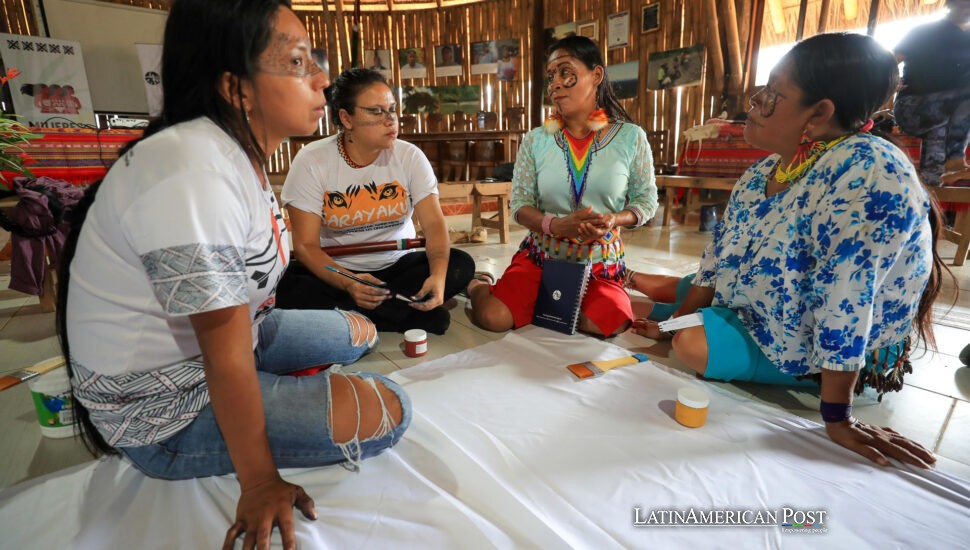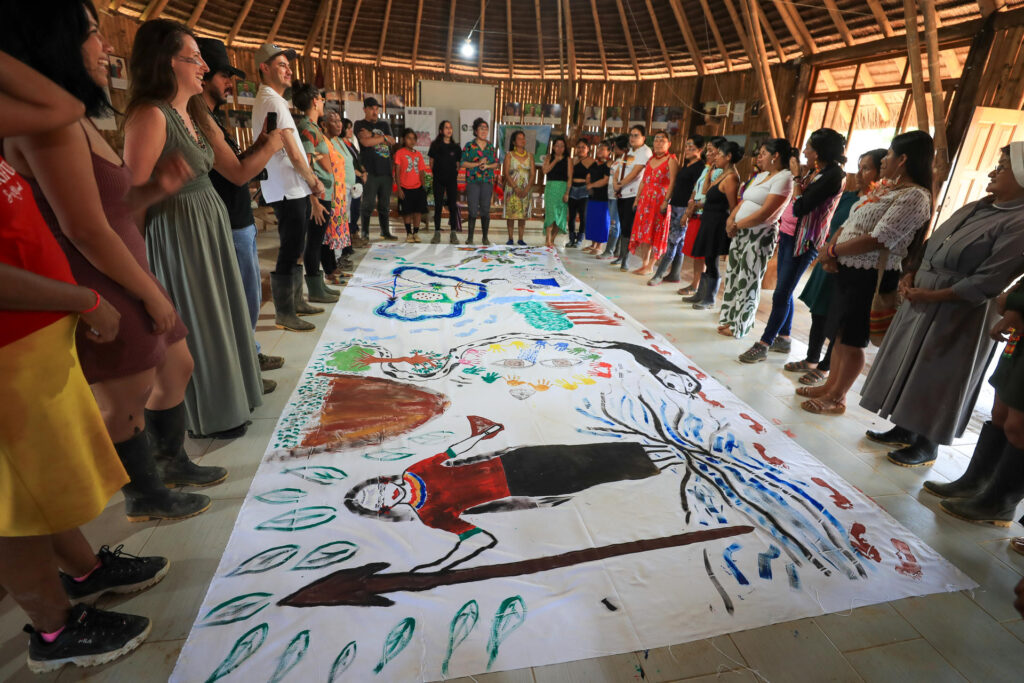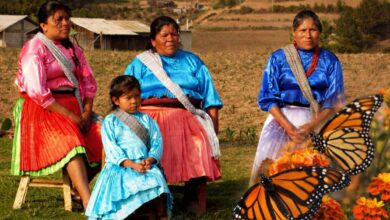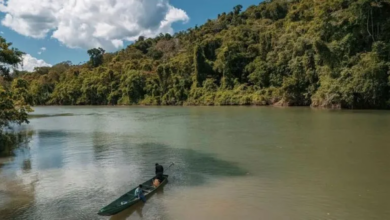In Ecuador’s Rainforest, Women Gather to Defend the Amazon With Law—and Sisterhood

Forty Indigenous leaders, lawyers, and organizers journeyed deep into the Ecuadorian Amazon last week, not for protest or spectacle, but to build a transnational legal shield. Their message from Sarayaku was urgent and straightforward: only collective defense can outlast oil, patriarchy, and politics.
A Village That Wrote Itself Into Law
Sarayaku, a Kichwa community nestled in the dense forests of Ecuador’s Pastaza province, isn’t just a village. It’s a living legal landmark.
In 2012, the Inter-American Court of Human Rights ruled that Ecuador had violated the rights of the Sarayaku community by authorizing oil exploration on their land without their prior consent. The case didn’t just vindicate one community—it changed international law.
“That judgment still protects every tree you see,” said community leader Noemí Gualinga, standing beneath a palm-leaf canopy adorned with banners woven by local women.
To outsiders, Sarayaku may seem remote. But for Cristina Mélo, of Fundación Pachamama, co-organizer of the week’s event—the Encounter of Women Jurists and Indigenous Defenders—the setting was essential.
“This is where precedent lives as daily practice,” Mélo told EFE. “We wanted everyone to touch that living law.”
Legal scholars at the University of British Columbia have hailed the Sarayaku decision as groundbreaking for recognizing the Amazon as a “Kawsak Sacha”—a Living Forest with its legal personality. Here, justice isn’t an idea. It’s an ecosystem.
When the Law Meets Intimidation—and Gendered Risk
During the sessions, the air buzzed with testimony—not just about lawsuits, but about real threats.
Kichwa, Shuar, and Achuar women shared stories of homes vandalized, phones ringing with anonymous threats, and children followed by men they couldn’t name.
“When women resist oil surveys, they’re told they’re neglecting their families,” explained Elizabeth García, dean of law at Pontificia Universidad Católica del Ecuador. “Patriarchy is a tool of the frontier.”
Research in World Development backs her up: Indigenous women defenders in Latin America are 50% more likely to face violence than their male counterparts.
But the meeting wasn’t just about trauma—it was about tactics.
Brazilian lawyer Júlia Machado led a session on the Escazú Agreement, Latin America’s first binding treaty to protect environmental defenders. Others, like Colombian eco-tourism innovator Josefina Klinger, talked about economic alternatives:
“Your territory isn’t a mine to be emptied,” she said. “It’s a cultural bank, gaining interest every day it stays intact.”
A Mural of Resistance, a Map of Memory
Between panels, participants dipped brushes into bright paint and began crafting a mural on black canvas. Hands formed braids, river spirals, jaguar tracks. Words emerged in three languages: “Life.” “Diversity.” “Future.”
It wasn’t just art. It was testimony.
Nunkui Tentets, from the Achuar-run Sharám conservation project, stood by her painted symbol—a chain of leaves. She described how illegal logging near Sahramentsa has thinned forests, chased away game, and triggered spikes in child malnutrition, backed by recent data from Universidad San Francisco de Quito.
“Illness arrives with the chainsaw,” she said, quoting village elders.
In her community, resistance means strapping GPS units to wrists and tracking ancestral hunting paths. The workshop framed this hybrid of tech and oral knowledge as “techno-shamanism”—not fantasy, but a modern legal tool.
“You can’t prove customary use in court without evidence,” Tentets added. “Now we have maps. And memory.”

Building a Legal Web That Spans the Amazon
Although Amazon spans nine countries, its defenders are often isolated. The women gathered in Sarayaku aimed to change that.
By week’s end, they had drafted a collective declaration committing to:
- Rapid-response legal teams for any community criminalized for protest
- Village-based paralegal training, so evidence can be documented before oil camps appear
- Strategic “venue-jumping”, shifting stalled cases from local courts to regional human rights bodies
“We’ve seen it work in Peru and Brazil,” Mélo said, referencing successful Indigenous lawsuits over the Conga mine and the Raposa Serra do Sol reserve.
But they also agreed: lawsuits are just one arrow in the quiver.
“We march, we sing, we cook for strikers,” said veteran activist Patricia Gualinga, who led the 2013 Amazonian Women’s March—a 250-kilometer protest to Quito during Ecuador’s last major oil licensing round. “Law is the last resort. But we’ll use it if we have to.”
As the final evening settled in, the mural dried under the glow of solar lanterns. Nearby, delegates scrolled through a newly created digital security protocol and a shared phone tree that connected legal allies from France to Brazil.
Also Read: How a Streetwise Argentine Choreographer Is Rewriting the Rules on Indian Stage
They knew more concessions might be announced. More threats might come.
But this time, they wouldn’t be facing it alone.
“Territory isn’t just space,” said Noemí Gualinga, quietly packing the rolled canvas. “It’s the future. And the future now has many more mothers.”




